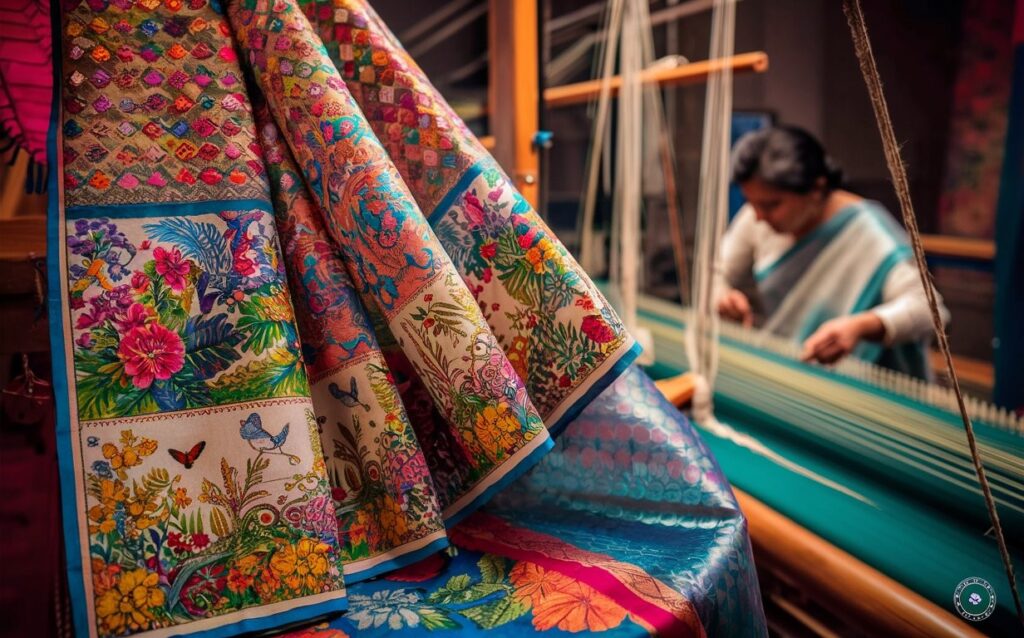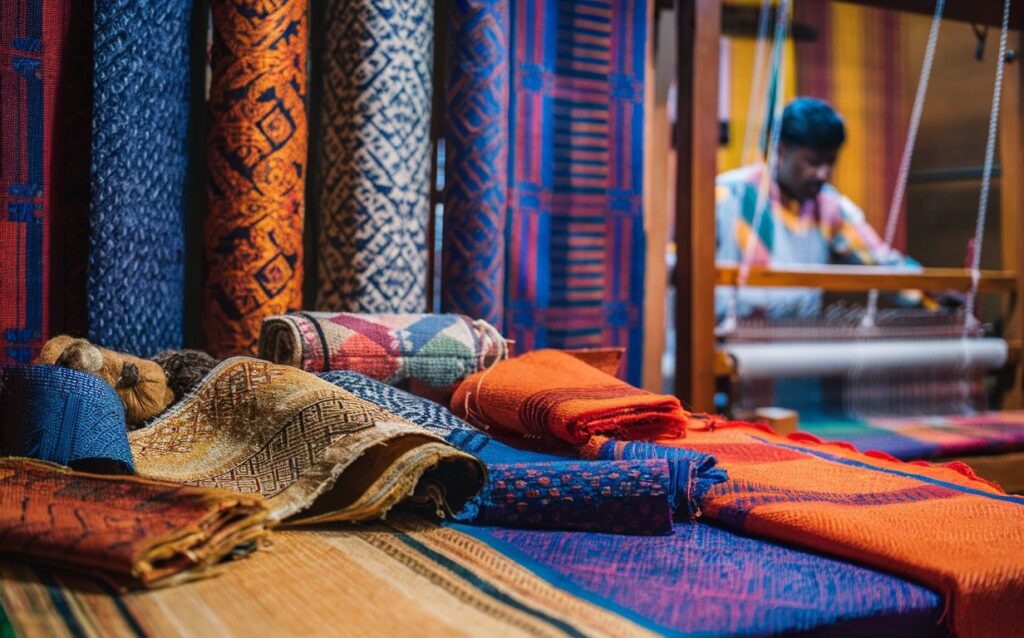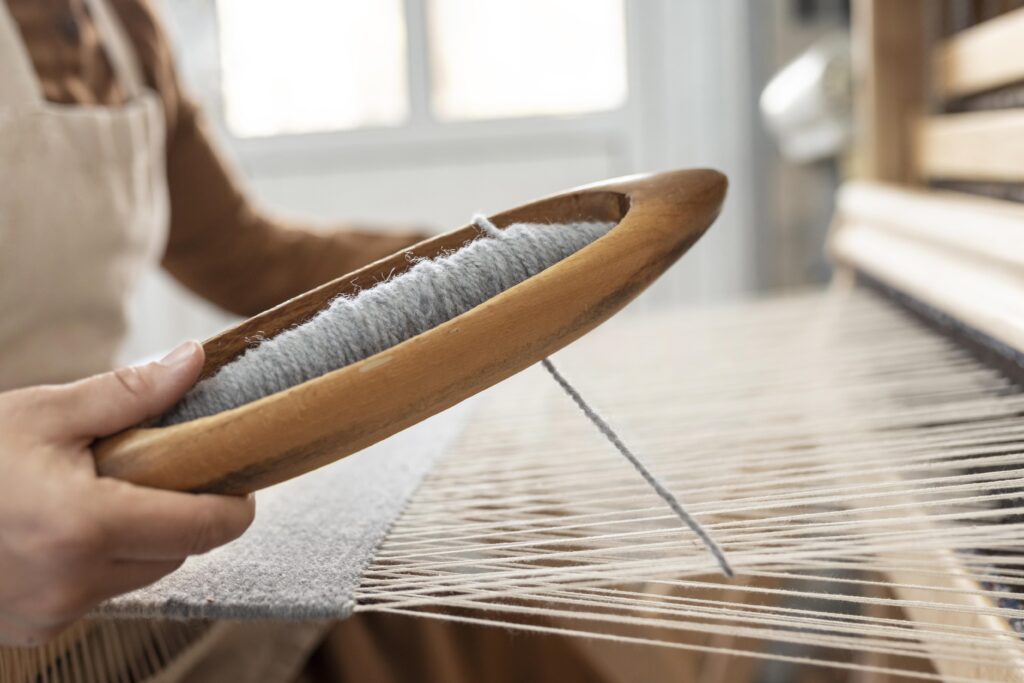Generations of talented weavers have poured their rich legacy into every handmade piece of cloth, creating a lasting testament to their craft. Our mission at Tanutra is to deliver these genuine Indian gems right to your home in the United States and Canada.

What is Indian Handloom?
Skilled artisans in India weave intricate textiles on traditional handlooms, crafting breathtaking deSigns and unmatched craftsmanship define Indian handloom. Unlike power looms that rely on electricity, operating a handloom demands exceptional dexterity. The weaver’s remarkable skill comes alive as they entirely drive the process by hand and foot. This intricate process results in one-of-a-kind masterpieces that capture the essence of Indian tradition.
An Annotated History of Tradition
Indian handlooms have a long history dating back thousands of years. Research points to the Indus Valley Civilization as having used weaving techniques as early as 3000 BC. Handloom weaving prospered over the ages under several empires, each of which left its mark on textiles. The Mughal dynasty in an era of rich brocades and elaborate embroidery. In the meantime, temple saris and colourful silks from South India gained notoriety. Handloom textiles served as more than just clothes; they were also a representation of social standing, cultural identity, and creative expression.
The Decline and Revival of Indian Handlooms
An important turning point occurred with the introduction of British colonization in the 18th century. The flood of low-cost, mass-produced textiles from England endangered Indian weavers’ means of subsistence. This caused the handloom sector to suffer, a trend shared by several colonized countries. Still, the essence of Indian hand looming remained. Mahatma Gandhi’s Swadeshi movement encouraged the use of native textiles as a means of resistance against British authority.
A Spectrum of Woven Wonders
It’s amazing how diverse Indian handlooms are. Every location in the world has its own distinctive weaving traditions and specialties, ranging from the luxurious silks of Varanasi to the delicate muslin of Bengal. A peek into the colourful world of Indian handloom goods can be found here: –
- Sarees – Sarees, the iconic Indian dress, are available in an astounding variety of materials, weaves, and embellishments. For any occasion and taste, there is a saree to suit, ranging from the airy cotton Malmal to the luxurious Kanjeevaram with its Zari border.
- Kurtas and Kurtis – Both men’s and women’s wardrobe essentials are these adaptable tunics. Handloom kurtas are available with elaborate embroidery or block prints on a range of materials, including cotton and silk.
- Dupattas – Indian clothing would not be complete without these exquisite scarves, which are also a lovely way to infuse any ensemble with a hint of tradition. Vibrant colours and exquisite weave patterns are displayed in handloom dupattas.
- Home Textiles – Indian handloom is used for more than only apparel. Beautiful table runners, cushions, throws, and bedspreads that are all expertly woven are available.

The Enduring Impact
Indian handloom is a colourful cultural tapestry that embodies more than just textiles. It is a symbol of India’s creative and cultural history. In a world where fast fashion rules, handloom provides an ethical and ecological substitute. Choosing handloom products means investing in long-lasting pieces, empowering local people, and supporting traditional workmanship.
Conclusion
Ready to weave a piece of Indian tradition into your life? Explore Tanutra’s exquisite collection of authentic Indian handloom products!
